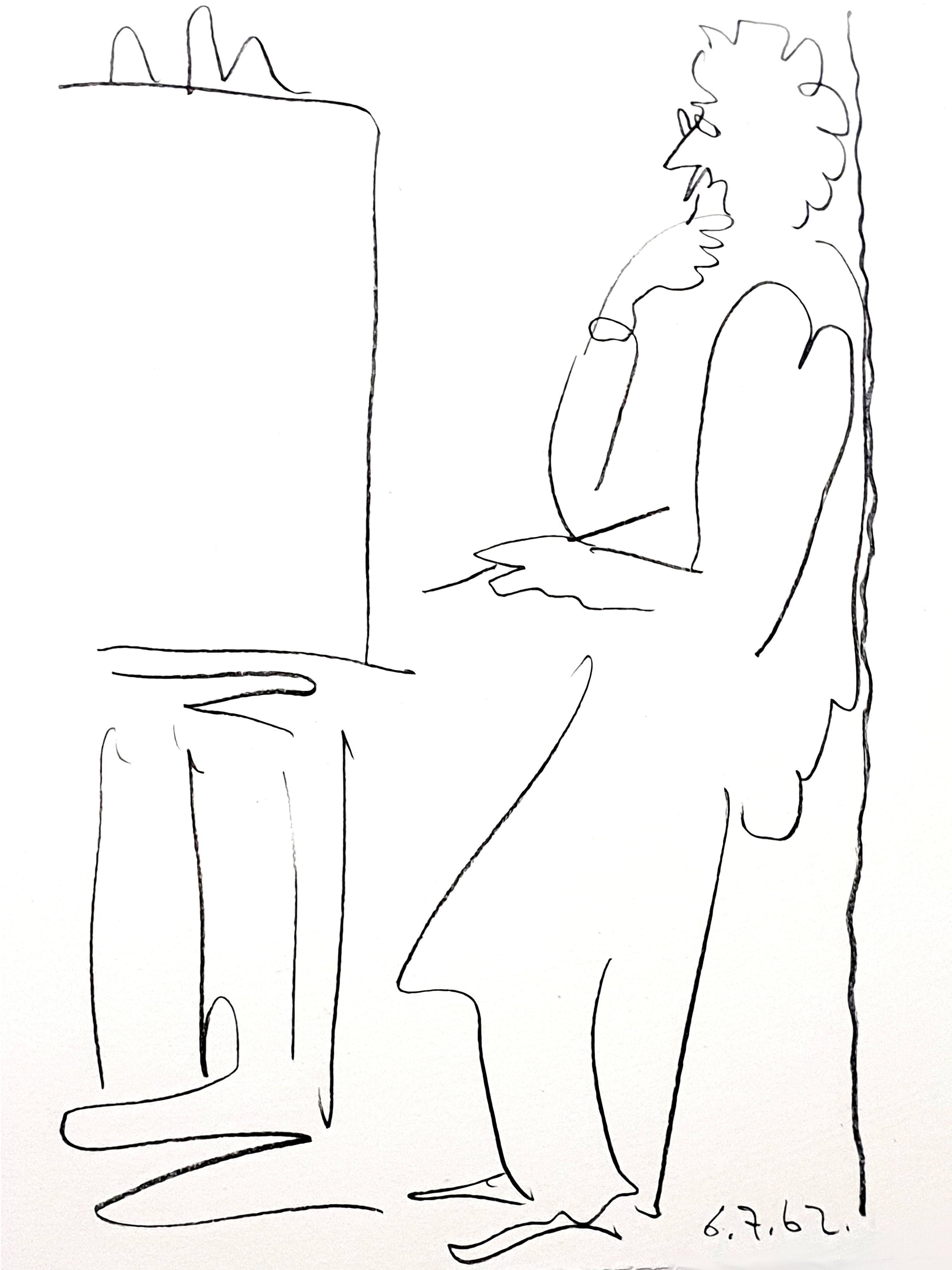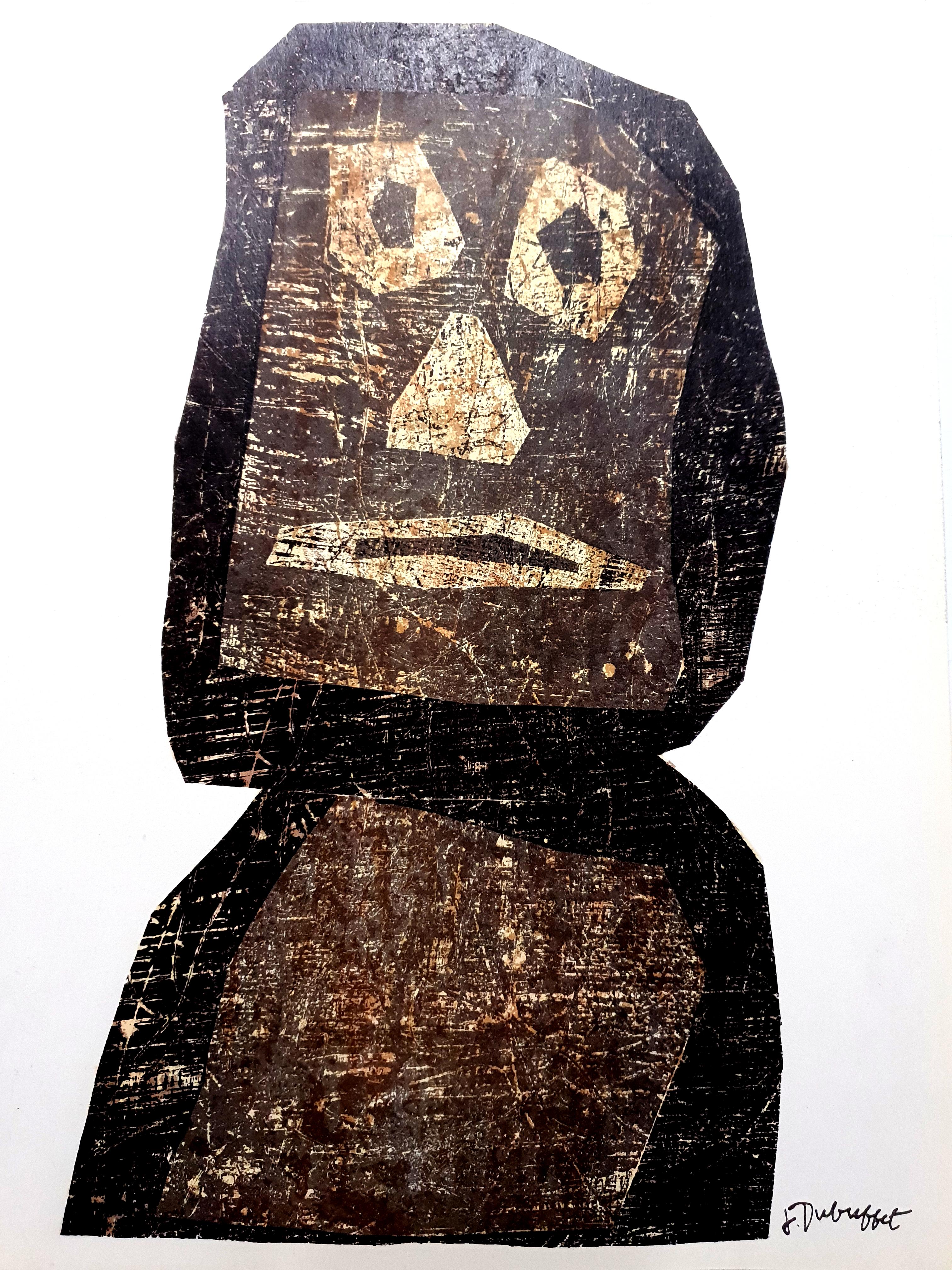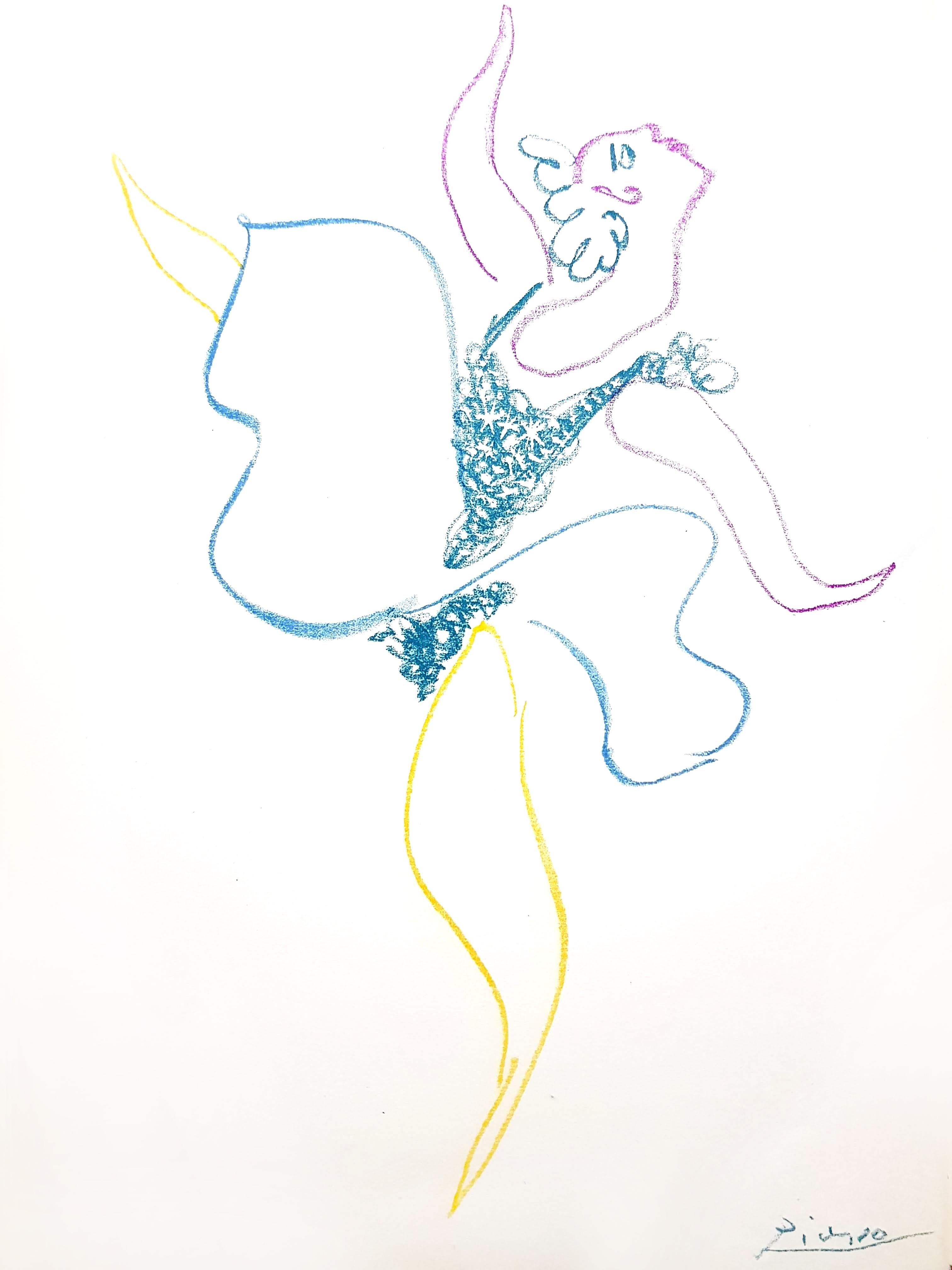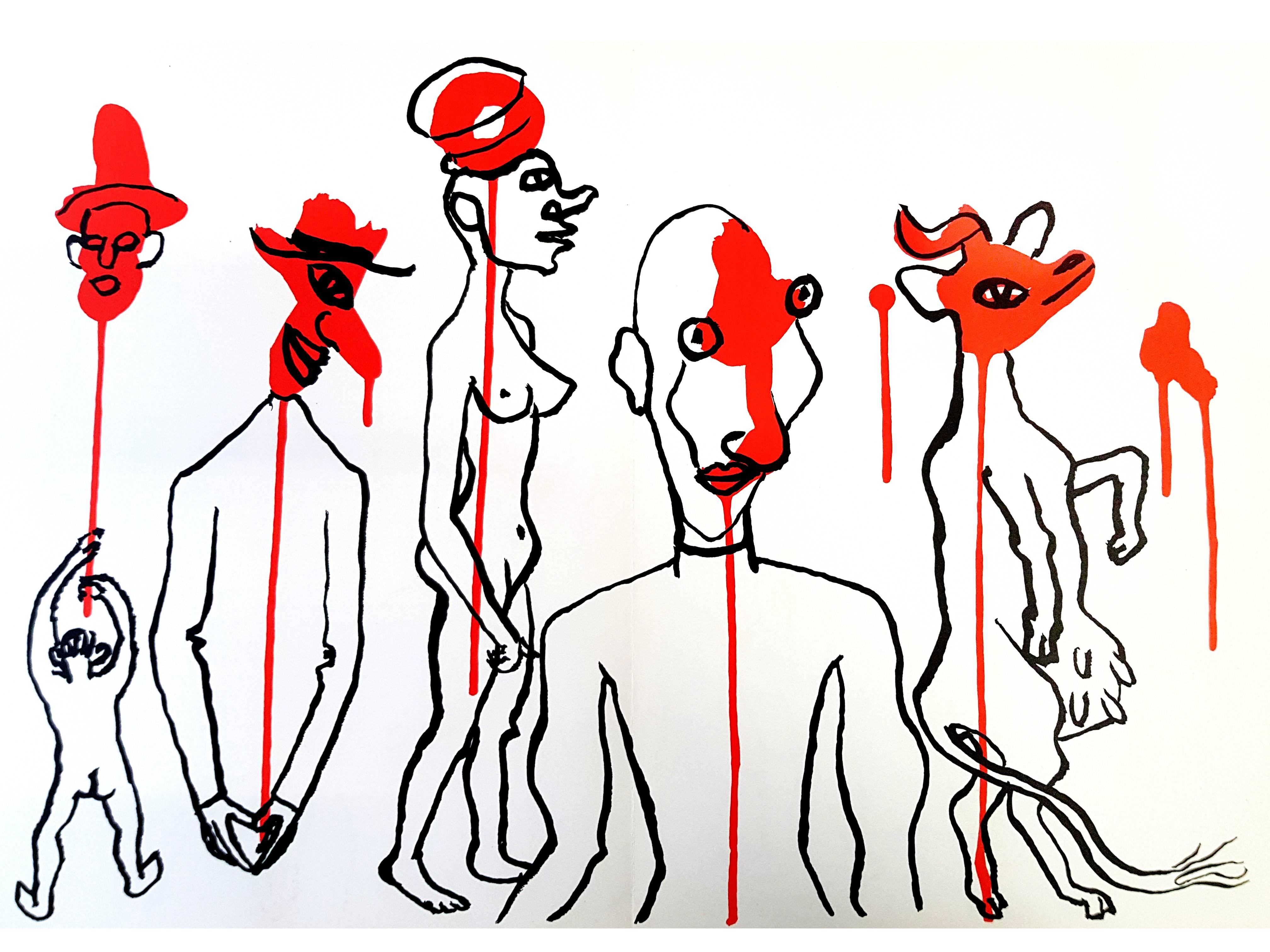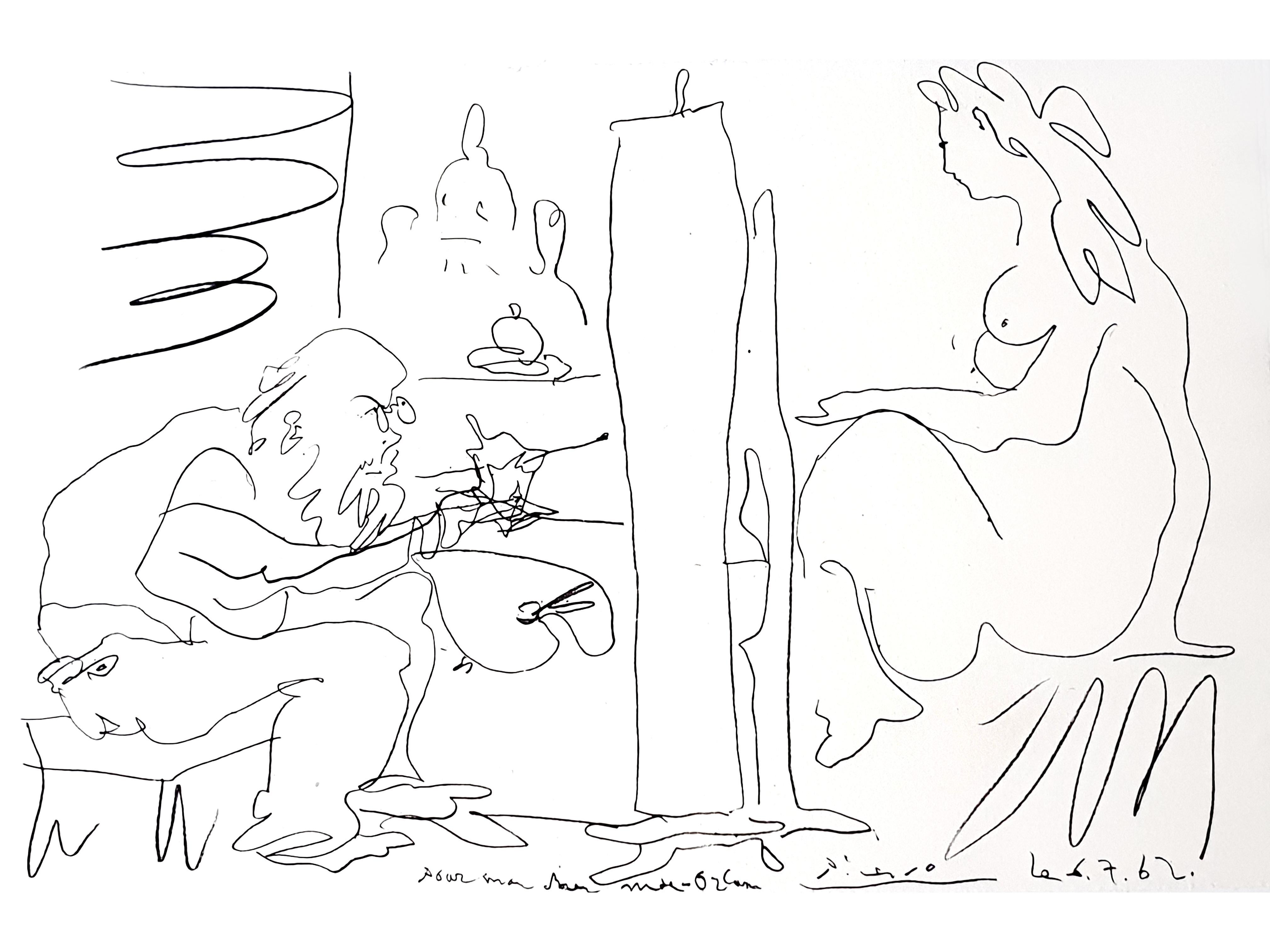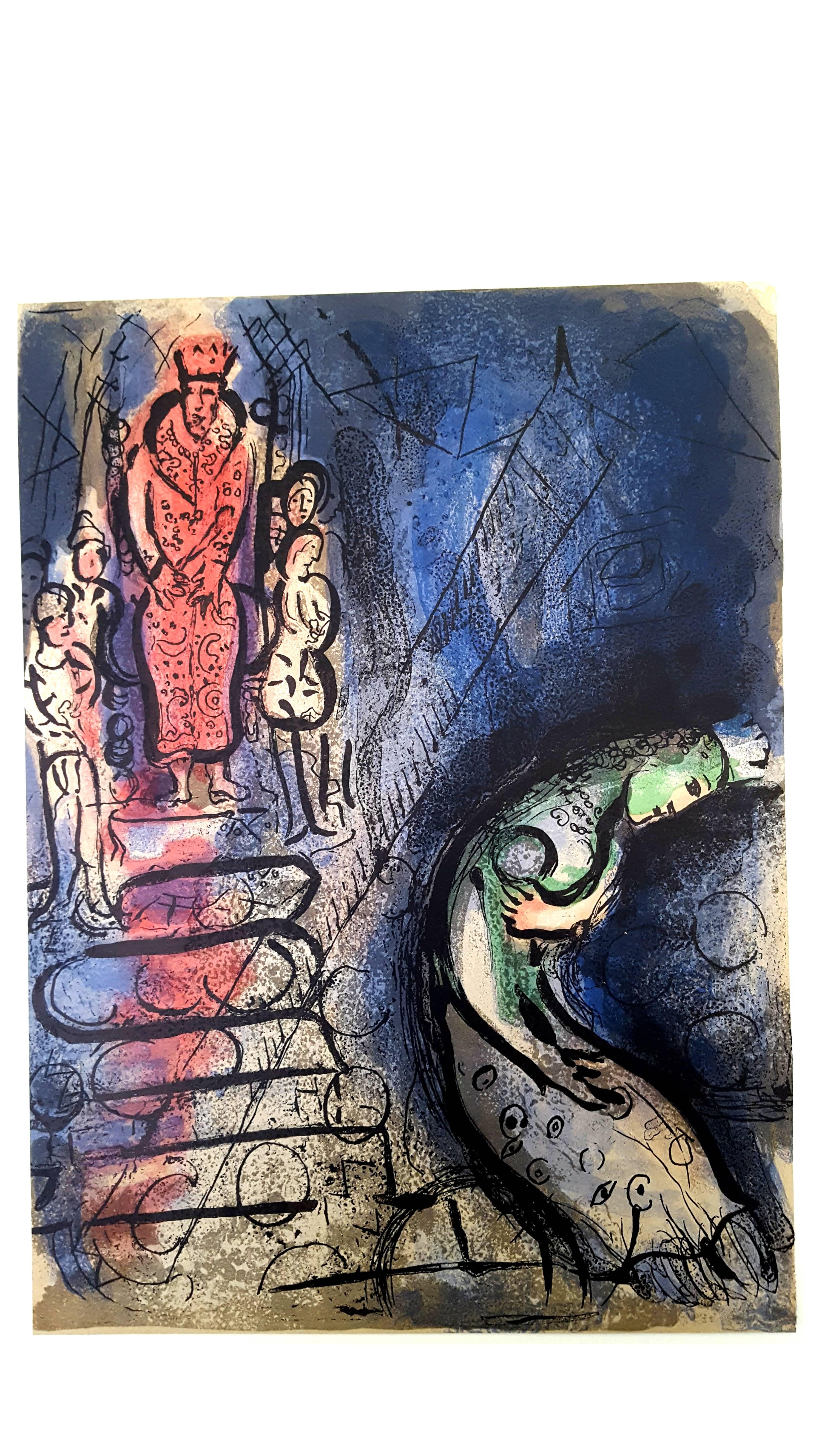Items Similar to The Human Comedy - Lithograph
Want more images or videos?
Request additional images or videos from the seller
1 of 6
(after) Pablo PicassoThe Human Comedy - Lithograph1954
1954
About the Item
After Pablo Picasso
The Human Comedy - Lithograph after an original drawing, as published in the journal "Verve"
Printed signature and date
Dimensions: 32 x 24 cm
This artwork is a lithograph on wove paper
Printed by Mourlot, Paris.
Pablo Picasso
Picasso is not just a man and his work. Picasso is always a legend, indeed almost a myth. In the public view he has long since been the personification of genius in modern art. Picasso is an idol, one of those rare creatures who act as crucibles in which the diverse and often chaotic phenomena of culture are focussed, who seem to body forth the artistic life of their age in one person. The same thing happens in politics, science, sport. And it happens in art.
Early life
Born in Malaga, Spain, in October of 1881, he was the first child born in the family. His father worked as an artist, and was also a professor at the school of fine arts; he also worked as a curator for the museum in Malaga. Pablo Picasso studied under his father for one year, then went to the Academy of Arts for one year, prior to moving to Paris. In 1901 he went to Paris, which he found as the ideal place to practice new styles, and experiment with a variety of art forms. It was during these initial visits, which he began his work in surrealism and cubism style, which he was the founder of, and created many distinct pieces which were influenced by these art forms.
Updates in style
During his stay in Paris, Pablo Picasso was constantly updating his style; he did work from the blue period, the rose period, African influenced style, to cubism, surrealism, and realism. Not only did he master these styles, he was a pioneer in each of these movements, and influenced the styles to follow throughout the 20th century, from the initial works he created. In addition to the styles he introduced to the art world, he also worked through the many different styles which appeared, while working in Paris. Not only did he continually improve his style, and the works he created, he is well known because of the fact that he had the ability to create in any style which was prominent during the time.
Russian ballet
In 1917, Pablo Picasso joined the Russian Ballet, which toured in Rome; during this time he met Olga Khoklova, who was a ballerina; the couple eventually wed in 1918, upon returning to Paris. The couple eventually separated in 1935; Olga came from nobility, and an upper class lifestyle, while Pablo Picasso led a bohemian lifestyle, which conflicted. Although the couple separated, they remained officially married, until Olga's death, in 1954. In addition to works he created of Olga, many of his later pieces also took a centralized focus on his two other love interests, Marie Theresa Walter and Dora Maar. Pablo Picasso remarried Jacqueline Roque in 1961; the couple remained married until his death 12 years later, in 1973.
Work as a pacifist
Pablo Picasso was a pacifist, and large scale paintings he created, showcased this cry for peace, and change during the time. A 1937 piece he created, after the German bombing of Guernica, was one such influential piece of the time. Not only did this become his most famous piece of art work, but the piece which showed the brutality of war, and death, also made him a prominent political figure of the time. To sell his work, and the message he believed in, art, politics, and eccentricity, were among his main selling points.
Conflicting with social views
Many things Pablo Picasso did during the 1950s, conflicted with the general public. Viciousness towards his children, exaggerated virility towards women, and joining the Communist party, were some of the many scandals which he was involved in during his lifetime. Although most of the things he did were viewed negatively by a minority of the general public, admirers of Pablo Picasso turned a blind eye, and still accepted him as a prominent figure in their society. Following the end of WWII, Pablo Picasso turned back towards his classic style of work, and he created the "Dove of Peace." Even though he became a member of the Communist party, and supported Stalin and his political views and rule, Pablo Picasso could do no wrong. In the eyes of his admirers and supporters, he was still a prominent figure, and one which they would follow, regardless of what wrongs he did. He was not only an influence because of the works he created, but he was also an influential figure in the political realm.
Influence outside of art
Although Pablo Picasso is mainly known for his influence to the art world, he was an extremely prominent figure during his time, and to the 20th century in general. He spread his influences to the art world, but also to many aspects of the cultural realm of life as well. He played several roles in film, where he always portrayed himself; he also followed a bohemian lifestyle, and seemed to take liberties as he chose, even during the later stages of his life. He even died in style, while hosting a dinner party in his home.
Collection of work
Pablo Picasso is recognized as the world's most prolific painter. His career spanned over a 78 year period, in which he created: 13,500 paintings, 100,000 prints and engravings, and 34,000 illustrations which were used in books. He also produced 300 sculptures and ceramic pieces during this expansive career. It is also estimated that over 350 pieces which he created during his career, have been stolen; this is a figure that is far higher than any other artist throughout history.
Sale of his works
Pablo Picasso has also sold more pieces, and his works have brought in higher profit margins, than any other artist of his time. His pieces rank among the most expensive art works to be created; with a price tag of $104 million, Garson a la Pipe, was sold in 2004.
Although he had a conflicting lifestyle, Pablo Picasso was admired by many, and was one of the most influential figures of his time. Not only during his life, but also after his death, he is still one of the most well known artists, and political figures, of his time. With thousands of pieces to his name, and art works which have been seen by millions, around the world, he has been a great influence to society, he has influenced the art world, and he introduced many new styles of art, which helped shape modern art, and modern styles artists follow today.
- Creator:(after) Pablo Picasso (1881 - 1973, Spanish)
- Creation Year:1954
- Dimensions:Height: 12.6 in (32 cm)Width: 9.45 in (24 cm)Depth: 0.04 in (1 mm)
- Medium:
- Movement & Style:
- Period:
- Condition:
- Gallery Location:Collonge Bellerive, Geneve, CH
- Reference Number:1stDibs: LU16122170943
(after) Pablo Picasso
Pablo Picasso (1881 – 1973) was a Spanish painter, sculptor, printmaker, ceramicist, stage designer, poet and playwright who is regarded as one of the most influential artists of the 20th century. He is known for co-founding the Cubist movement, the invention of constructed sculpture, the co-invention of collage, and for the wide variety of styles that he helped develop and explore. Exceptionally prolific throughout the course of his long life, Picasso achieved universal renown and immense fortune for his revolutionary artistic accomplishments, and became one of the best-known figures in 20th-century art. The total number of artworks he produced has been estimated at around 50,000.
About the Seller
4.9
Gold Seller
These expertly vetted sellers are highly rated and consistently exceed customer expectations.
Established in 2015
1stDibs seller since 2015
908 sales on 1stDibs
Typical response time: 2 hours
- ShippingRetrieving quote...Ships From: Collonge Bellerive, Geneve, Switzerland
- Return PolicyA return for this item may be initiated within 7 days of delivery.
More From This SellerView All
- Pablo Picasso - The Painter - Original LithographBy Pablo PicassoLocated in Collonge Bellerive, Geneve, CHPablo Picasso - Original Lithograph Title: Painter and his Model From the illustrated book "Regards sur Paris" (Paris: André Sauret, 1962) Edition of 180 Individual prints were not s...Category
1960s Modern Portrait Prints
MaterialsLithograph
- Jean Dubuffet - original lithograph from XXe Siecle magazineBy Jean DubuffetLocated in Collonge Bellerive, Geneve, CHJean Dubuffet - Original Lithograph from XXe Siecle magazine 1958 Dimensions: 32 x 25 cm Edition: G. di San Lazzaro. Unsigned and unumbered as issuedCategory
1960s Modern Figurative Prints
MaterialsLithograph
- Pablo Picasso - The Ballet Dancer - Original LithographBy Pablo PicassoLocated in Collonge Bellerive, Geneve, CHPablo Picasso - Original Lithograph Title: The Ballet Dancer Dimensions: 32 x 24 cm 1954 Reference: Bloch 767 Frontispiece for the book "Le Ballet" (Paris: Editions Hachet, 1954) by...Category
1950s Modern Portrait Prints
MaterialsLithograph
- Alexander Calder - Original Lithograph - Behind the MirrorBy Alexander CalderLocated in Collonge Bellerive, Geneve, CHAlexander Calder - Original Lithograph - Behind the Mirror Original lithographs produced in 1976 Dimensions: 38 x 56 cm Source: Derrière le miroir (...Category
1970s Modern Portrait Prints
MaterialsLithograph
- Pablo Picasso - The Painter and His Model - Original LithographBy Pablo PicassoLocated in Collonge Bellerive, Geneve, CHOriginal Lithograph - Pablo Picasso Title: The Painter and His Model This is unsigned and unnumbered, as issued From the book/portfolio "Regards sur Paris" Published by André Saure...Category
1960s Modern Figurative Prints
MaterialsLithograph
- Marc Chagall - The Bible - Ahasuerus Sends Vasthi Away - Original LithographBy Marc ChagallLocated in Collonge Bellerive, Geneve, CHMarc Chagall, Original Lithograh depicting an instant of the Bible. Technique: Original lithograph in colours (Mourlot no. 234) On the reverse: another black and white original litho...Category
1960s Modern Figurative Prints
MaterialsLithograph
You May Also Like
- Study for a portrait of John EdwardsBy Francis BaconLocated in London, GBOriginal lithographs in colours on Arches paper, with full margins, framed hand-signed by the artist in pencil, lower right on recto Image: 60 × 45 cm, Sheet: 81 × 60 cm, Framed: 89....Category
1980s Modern Figurative Prints
MaterialsLithograph
- Sculptures: Dark InteriorBy Henry MooreLocated in London, GBLithograph on paper. Hand-signed and numbered by the artist. Paper size: 43 x 52 cm Framed 48.3 x 57.4 cm Edition of 75Category
1970s Modern Figurative Prints
MaterialsLithograph
- Time After Time.By Ann ChernowLocated in Storrs, CTLithograph with watercolor. 22 3/8 x 30 5/8. Edition 56 (plus 5 artist's proofs). A bright impression printed on the full sheet of Arches paper. Signed and numbered 4/56 in pencil. ...Category
Late 20th Century American Modern Figurative Prints
MaterialsWatercolor, Color, Lithograph
- Burlesque Girl.Located in Storrs, CTLloyd William Wulff. Burlesque Girl. 1938. Lithograph. 10 1/4 x 11 3/8 (sheet 12 1/2 x 15 1/8). Edition 28, #16. Federal Arts Project blind stamp. Printed on cream wove paper with fu...Category
Mid-20th Century American Modern Figurative Prints
MaterialsLithograph
- J.A.M. Whistler with the White Lock.By Thomas Robert WayLocated in Storrs, CTJ.A.M. Whistler with the White Lock. c. 1895. Lithograph. Gallatin 131. 8 1/8 x 5 1/2 (sheet 10 X 6 3/4). A tonal impression printed on fine wove paper. Signed in pencil.Category
19th Century Modern Portrait Prints
MaterialsLithograph
- Chelsea RagsBy James Abbott McNeill WhistlerLocated in Storrs, CTChelsea Rags. Chelsea Rags. 1888. Lithograph. Way 22, Levy 35, Tedeschi, Stratis and Spink 26. 7 1/8 x 6 5/16 (sheet 12 3/4 x 8). Printed on cream laid paper. Provenance: Miss Rosalind Birnie Philip, Whistler's sister-in-law, her seal verso: (Lugt 405). Michael Parkin Fine Art, Ltd. from whom purchased in 1972. Christie's, King Street.Signed with the butterfly in the image. One of 13 impressions listed by Way, before the image was transferred to supplementary stones for the edition of 500-1,000 printed by Way and issued in the Albemarle, January, 1892. Signed with the butterfly in the stone and in pencil. Housed in an elegant silk mat with a silver liner, and in a 16 3/4 x 14 3/4-inch silver leaf frame decorated with fleur-de-lis decorations. "And his interest in London has not been restricted to the Thames. Seeing the beautiful, where other men might be discouraged by dullness, he has taken his subject, now in the little cheap shop opening a low window upon the street, now in the forgotten church hidden away in a lonely square. And Chelsea Rags, the Shops of Chelsea, the Drury Lane, as well as The Butcher's Dog, are impressions of vague Rembrandtesque interiors where figures, grim or graceful, peer from out deep shadows— shops as lovely in his prints as the halls of a Veronese, or the palaces of a Claude." Elizabeth Robins...Category
Late 19th Century American Modern Figurative Prints
MaterialsLithograph
Recently Viewed
View AllMore Ways To Browse
Pablo Picasso 1959 Lithograph
Picasso Engraving
Pablo Picasso Women
The Wrong Man
Ballet Lithograph
Picasso The Genius
Ballerina Print
Large Lithograph Picasso
Pablo Picasso Illustrations
Picasso Rose
Picasso Original Art For Sale
Pablo Picasso Original Signature
Picasso Lithograph Blue
Picasso Blue Lithograph
Picasso Ballet
Picasso Lithograph On Black
Pablo Picasso Blue Period
Pablo Picasso Couple
